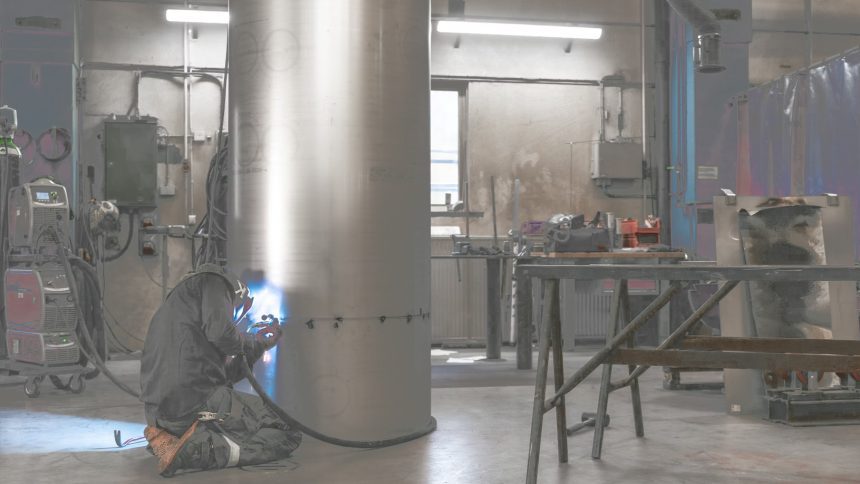Aluminum, an extraordinary and unparalleled metal, boasts a myriad of advantageous attributes that render it a prime choice for diverse projects. Given its exceptional properties, the practice of Tungsten Inert Gas (TIG) welding on aluminum is not an uncommon occurrence.
Aluminum is a difficult material to weld. Here is a guide covering all the major aspects of TIG welding on aluminum.
Welding Town
Within the confines of this enlightening discourse, a treasure trove of insights awaits those embarking on their maiden journey into the realm of aluminum TIG welds. This invaluable guide is meticulously crafted to cater to novices, encompassing crucial elements ranging from optimal current settings to the seamless amalgamation of aluminum with other materials. The voyage of knowledge commences forthwith.
Delving into the Fundamentals of TIG Welding: TIG Welding Basics
Before delving into the intricacies of TIG welding on aluminum, it is pertinent to provide a concise introduction to the basics of this welding technique. If you are already acquainted with the method, feel free to navigate to the subsequent sections where I offer detailed techniques and recommendations. However, for those unacquainted, taking a moment to familiarize oneself with the following lines will pave the way for better comprehension of the forthcoming content.
TIG welding, also known as tungsten arc gas welding, is a sophisticated fabrication process wherein two distinct pieces of metal are skillfully fused to create a unified whole. This welding method necessitates the use of non-consumable tungsten electrodes, inert gas shielding, filler material, and a specialized welding machine capable of supplying the requisite current.
An exceptional welding technique, TIG finds its utility in joining various metallic materials, extending beyond steel to encompass non-ferrous metals like copper, magnesium, and, notably, aluminum.
Influential Factors Affecting the TIG Welding Process
What Parameters Are Important in TIG Welding? Beyond the welder’s skillful technique, an array of factors intricately influence the TIG welding process. Some of these factors pertain to the equipment utilized, while others revolve around the properties of the materials involved in the weld. Familiarizing oneself with the following fundamentals is imperative for embarking on this welding journey:
Shielding Gas: Renowned worldwide, pure Argon is the go-to choice for approximately 90% of TIG welding applications. This versatile gas facilitates the easy welding of stainless steel, aluminum, and carbon steel. Moreover, certain gas mixtures, like Helium and Argon blends, create a hotter arc for specific welding scenarios.
Properties of the Electrode: The size of the electrode is influenced by the application requirements. Based on the amperage and thickness of the metal, specific electrode sizes demonstrate superior performance. In some projects, electrodes containing materials beyond tungsten may be preferred.
Gas Flow: For most TIG welding operations, maintaining an adequate gas flow ranging from 20 to 30 cubic feet per hour is crucial. Opting for larger cup sizes may necessitate increased gas flow.
Current Settings: Among the essential aspects of any weld are the current settings. While advanced machines with unique features cater to quick learning and frequent welding, two primary parameters demand attention: amperage and polarity.
Additional Parameters: Several other pivotal factors play a role in the welding process, including joint type, material thickness, welding position, and base material.
Understanding and mastering these influential factors will undoubtedly contribute to achieving superior TIG welding results.
Applications of TIG Welding with Aluminum
Curiosity may lead one to wonder where welders apply the TIG welding technique on aluminum. The answer lies in its widespread use across various industries, finding abundant applications in different fields. A notable example includes welding thin wall tubes or pipes with small diameters, making it particularly prevalent in the bicycle industry.
TIG welding on aluminum finds favor in numerous areas, such as:
Bicycle Frames
Cylinder Heads
Engine Blocks
Injector Bungs
Rims
Radiator
Intake Manifolds
For specific applications involving aluminum foil, welders have the option to employ arc or spot welding. Additionally, laser welding stands as a favorable choice, allowing fine-tuning of power for delicate aluminum foils and even micromachining.
When dealing with Aluminum cans, using a 1/16″ tungsten electrode on a dynasty 200 machine proves effective. Employing MIG wire as filler material, commencing at 20 amps, and initiating the arc on the filler wire aids in avoiding blowouts in the can. Gradually increasing the amperage to 25 while skillfully running beads around the can ensures successful welds without compromising its integrity.










